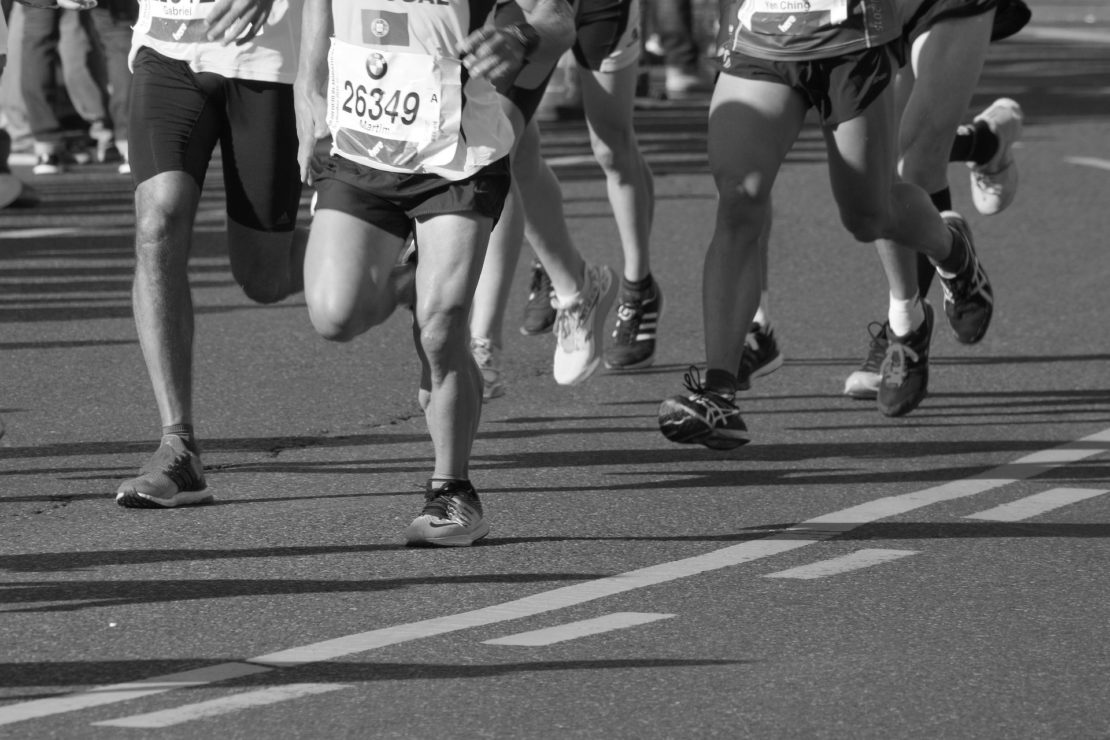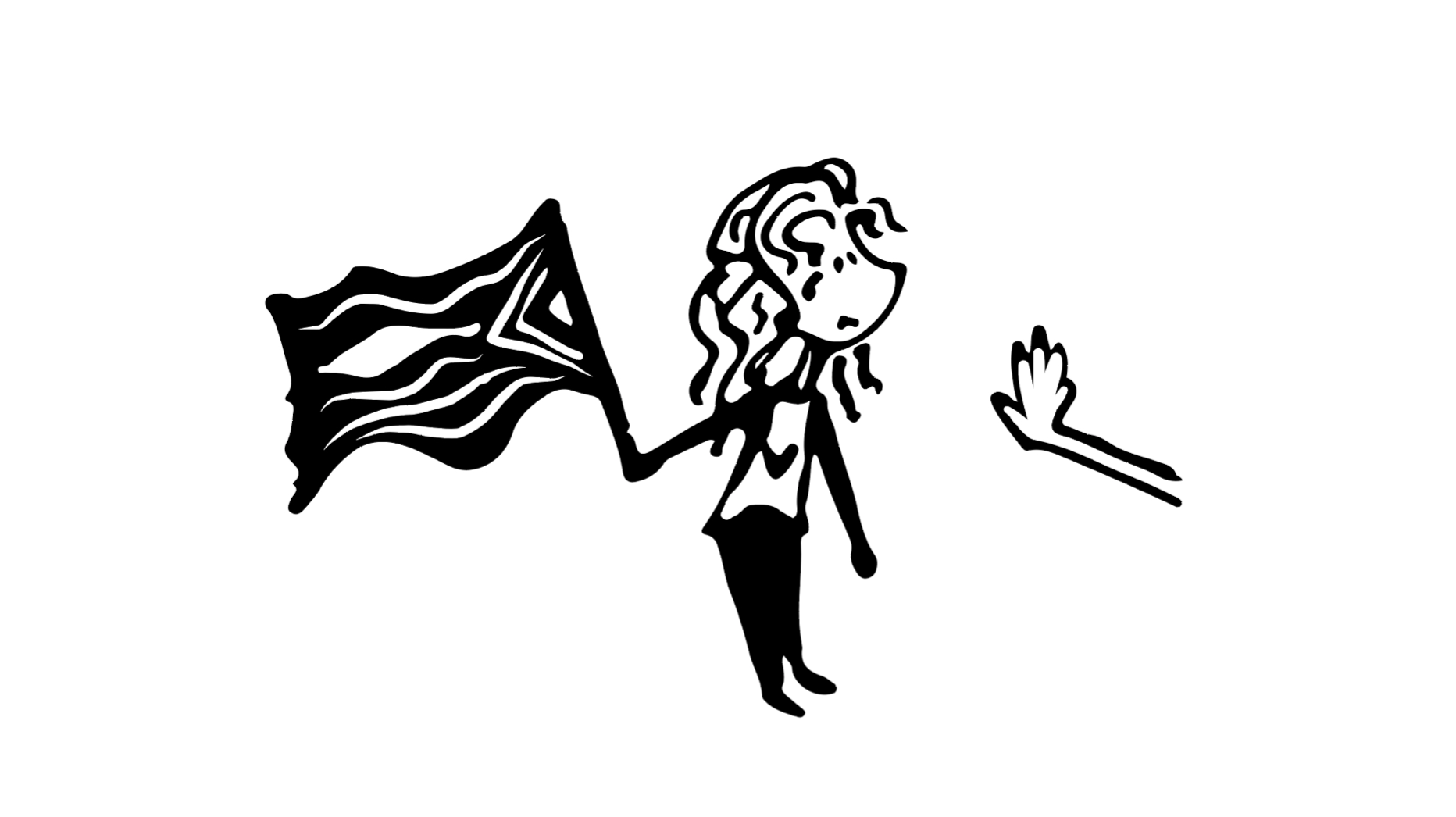A beginner’s guide to getting off the couch and across the finish line

Last October, I dragged myself over the finish line of the Goodlife Fitness Victoria marathon. My time wasn’t impressive, but I had an excuse to eat absurd amounts of food and humble-brag about my sore but impressive muscles.
For anyone who would like to try a marathon but, like me, is a ‘lazy’ runner, I’ve compiled a step-by-step guide to getting in shape (or close enough) to run a marathon. Other runners might disagree with my advice, but here is what I did to survive those 42 kilometres.
First off, you have to pick your event. If you don’t like the sound of getting up at 4 a.m. to avoid the summer heat (nobody does), choose a spring race so you can train through the fall and winter. Plus, running through the rain and/or snow will impress your roommates.
Because my race was in October, most of my training was in 30-degree weather. I can’t say that I look back on that ordeal with much fondness. I found that paying for entry in the race forced me to start my training early—and yes, you actually have to pay to enter, even though it feels like the organisers should be paying you.
In my experience, nutrition was the most critical part of preparation. Anything longer than a half marathon requires either a backpack or a belt to carry water. If you’re doing a five-kilometer race in the fall and you’re below the age of 60, you don’t need to bring anything. If you do, you’ll look like one of those guys who brings hiking poles and a compass to a walk in the park.
Volunteers at races usually give out free energy gel packets, so if you plan on taking them, try some when you’re training. People often try them for the first time during the race and suffer the humiliating consequences on their stomach—no detail needed.
You may have heard of the term ‘hitting the wall’—where the body runs out of stored sugar and switches to burning fat. Strong, disciplined people evade this by training their bodies to only burn fat through cutting out carbs and going running without eating first—I just ate candy the night before and brought snacks. You can choose either of these options, and I admire you if you can stop eating bagels.
I hit the wall once during my training and had to get my mum to pick me up. For this reason, I strongly recommend you bring a phone or bus pass so you don’t have to walk home.
You only need to do the longest, toughest runs once a week. To develop speed, go for shorter runs every other day or so, between five and 15 km. Build up to the longer runs slowly over four to five months by roughly five km increments every week—nobody can run 42 km right off the bat.
Getting someone crazy enough to train with you is really helpful, because the long runs can get very boring, and you’ll eventually run out of podcasts to listen to. My buddy was my dad, who was 49 at the time and in much better shape than me. Watching him sprint into the distance whilst I shuffled along was quite humbling, so bring someone slow if you’d like a confidence boost.
It’s important to keep in mind, nobody runs a marathon because it’s ‘relaxing’ or ‘energizing.’ People who say this are what we in the running community like to call ‘massive liars.’ You can expect to feel uncomfortable, but not completely miserable. Any unbearable pain, throwing up, or passing out may mean you have chosen an overly ambitious speed or distance. Go at a pace that feels good, and don’t let the show-offs in Lycra tell you otherwise.
Apart from the race and something to carry your water bottle, the only thing you need to pay for is a decent pair of shoes. Prices are typically high enough to make your blood run cold, but those runners are worth it. Visit somewhere with knowledgeable staff who can look at your gait and recommend the right shoes for you. Unfortunately, this won’t be the clearance section at Winners. The rest of your clothing doesn’t matter—perhaps a supportive bra if it applies to you—so you can go back to Winners. Just please don’t run in jeans.
So now you’re ready to spend your hard-earned money to put yourself through hours of training, 41 kms of running, and have wobbly legs for days afterwards—sounds fun, right? In all honesty, once I’d gotten over the shock of finishing the damn thing, I had never felt so good about myself. And seriously, if I can do it, you can too. Your friends and family will be ridiculously proud, despite not quite understanding why you did it. And best of all, you’ll finally give your mom a kid she can brag about to her book club.






